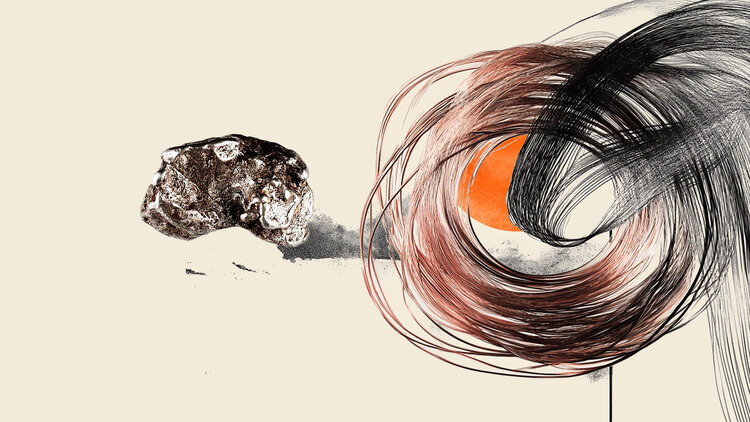The scenario is always the same: Tommaso, 5 years old, and his brother Gioele, 9, begin to fight for the choice of the cartoon, for the ownership of a toy, for those who have to grab the larger slice of pizza. In a few moments, The dispute degenerates into a physical clash. The mother immediately intervenes to separate them, instinctively taking the defenses of the smallest, which appears more defenseless. But is it really the best solution? No, according to experts.
The opposition, for children, are precious opportunities to get to know each other better. Explains it Marta Versiglia, pedagogist and counselor, which follows the research and application of the method Quarry wellconceived by Daniele Novaraand that in his new book, Baruffe & hugs condominium (Electkids), opens the home doors of six apartments of an imaginary condominium and tells the reality of as many families apparently very different, but in reality always the same in their dynamics. To resolve the situation, in all cases, intervenes Ping, a character who falls into the houses with his red ball of the red to bring a new point of view and important educational messages. One above all: even in the worst moments, in the “more quarrelsome” quarrel, we must never forget that communicating is always possible.
Is arguing a normal thing?
«Absolutely yes. For children, quarrel is part of the game and is used to get to know others. They do like animal puppies: they chase each other, they nibble. Conflict is a fundamental experience for developing autonomy and relational skills. If left free to manage the comparison, they often find solutions alone. The intervention of the adult, if excessive, risks amplifying the problem rather than solving it “.
In the book we talk about Ping, a particular character. Who is and what function does it have?
«Ping is a character out of the time and space that appears in moments of tension within the families of the Baruffe & hugs condominium. He brings with him a red ball, symbol of the quarrel that unrolls and melts. Thanks to the ball, children have a concrete object to cling to while telling their version of the conflict. We do not seek an “absolute truth”, but to allow everyone to express themselves. This also helps the most fragile child to make his voice heard, and the most dominant one to understand other points of view ».
The method Quarry well It has become a scientific approach in 2012. How does it help children and parents?
«This method, developed by Daniele Novara, starts from the principle that children must be put in a position to resolve their conflicts independently. The adult must not take sides as a judge, but facilitate dialogue, creating a safe confrontation space. The goal is not to avoid quarrels, but teach children to manage them in a constructive way ».
How can it be applied concretely in the daily life of families?
«A simple example is precisely the use of the ball, like that of Ping: when two children fight, they can take the word in turn passing the ball. If they don’t want to speak immediately, they pass it to the other and try again later. This gesture helps to shift attention from your hands to words, allowing you to tell your version and cool emotions. If the child does not feel like talking, he can also write (or drawing, especially if he is still small), giving time to the emotions of praising ».
What can be done, however, if a conflict becomes too heated?
«Sometimes, if the situation degenerates, it is useful to stop the moment of tension, perhaps with a simple gesture how to rinse your face or make a deep breath. Then you can resume the comparison with a symbolic object, such as the ball or a leaflet on which to write or draw your version of the facts ».
How can children teach the sense of quarrel?
“Teaching the” sense of quarrel “means making children understand that discussing is not something bad or wrong, but a moment of comparison in which they can manifest their point of view respecting that of others. Growing with this awareness will help them express themselves and impose their ideas allowing others to do it, even as adults ».
How important is the example of parents?
«Children are sponges: they absorb everything they see. If parents face conflicts with respect, without screams or aggression, children learn to do the same. It is normal that there are discussions in the family, but the important thing is to give the right space to everyone, without exasperated tones. Showing children who can be discussed without prevaricating is a fundamental life lesson ».
The book tells of six different families, but with common dynamics. Is the conflict the same for everyone?
«Yes, the conflict has universal dynamics. In the book I wanted to represent families of all kinds: single parents, families with two mothers, with children of different cultures. The message is clear: quarrel is a common experience, regardless of the context. Personal stories change, but the need to learn to manage the conflict remains the same ».
What is the greatest benefit you get teaching children to “quarrel well”?
«Children learn that the conflict does not necessarily have to have a winner and a won, but that it can be an opportunity to get to know each other better. We are not looking for the truth and we do not always get to an immediate agreement, but often children return to play together spontaneously after expressing their differences. Teaching them to manage comparison with respect means giving them valuable tools for life ».
Source: Vanity Fair
I’m Susan Karen, a professional writer and editor at World Stock Market. I specialize in Entertainment news, writing stories that keep readers informed on all the latest developments in the industry. With over five years of experience in creating engaging content and copywriting for various media outlets, I have grown to become an invaluable asset to any team.







